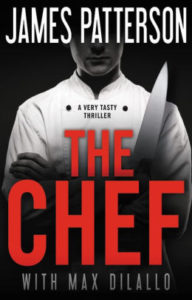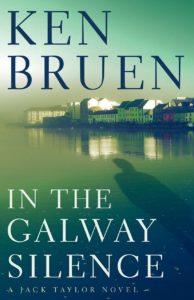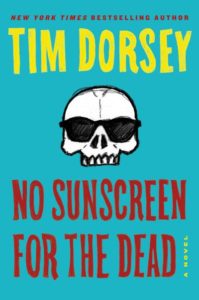People love something that is free. The problem which those of us who offer commodities for sale face is that our audience after a bit not only loves “free” but also expects “free.” There is a way around this. It is the concept not of “free” but of “extra.”
Most of us infuse a bit of our personal knowledge and/or interests in our stories. If you do this you can take things a step further, giving your reader (who is also hopefully a buyer) a bit more about the subject matter or point(s) of interest in the book either within the narrative or outside of the story by providing further information within the book itself or through a link to a dedicated web address that does the same thing. It gives the reader a bit of lagniappe, a French term meaning “a little something extra.”
I initially encountered the term “lagniappe” in New Orleans. It doesn’t have to be big, just 1) kind and 2) deliberate. I chatted up a cashier at a Walgreens and when she was done with the sale she tossed one of those counter mints in my bag, I assume because I was nice to her. It’s a good marketing ploy. I still visit that particular Walgreens at least once whenever I’m in the city. It’s not a new concept either. When I was a bambino my parents would take their angelic and perfectly behaved children out for Sunday dinner to a restaurant called The Florentine which was a Columbus institution right up to its closing in 2016. It was old school before there was old school, with oil paintings on the walls, linen table cloths, and food on the table almost as good as your grandmother’s. What we loved, however, was that the cashier, who seemed ancient in the 1950s, presided over a collection of penny candy. He would pass out an assortment of mini-rolls of lifesavers, Necco wafers, and the like. Naturally, my brother, sister, and I always wanted to go there for the weekly dinner out. We subsequently moved to another city in 1963, but when I moved back to Columbus in 1978 and visited The Florentine the guy was still there, seemingly no older and still passing out candy to the children whose families patronized the restaurant. More recently I found that another Scotty’s Cafe, another Columbus area restaurant, does the adult version of that. At the close of the meal, one of the owners presents the customer with a small but extremely delicious piece of cake or breakfast roll, gratis. Believe me, you’d come back to Scotty’s anyway for the main course, but the little extra surprise — the lagniappe — seals the deal. It tells the customer that they’re glad you came in.
I started thinking about this because of a new James Patterson (with Max DiLallo) novel I just read titled THE CHEF. It’s a thriller, set in New Orleans during Mardi Gras (great market timing, there), and is about a police officer who also runs a food truck. The concept, in case you’re wondering, actually works. My point in mentioning it, however, is that at the end of the book Patterson and DiLallo include the recipes for a number of the dishes mentioned during the course of the story. We’re talking Crab Gumbo, New Orleans-style grits, and the like. They’re food truck-ready recipes, which means that you or I could (probably) make them without setting our kitchens on fire. It was a nice surprise to find those. Lagniappe. Folks aren’t going to buy the book because of it, at least initially, but if the authors decide to turn it into a series readers might remember the inclusion of the recipes (or recall having read about them in a blog post or review) in the first volume and come back for more.
Other authors have a reputation for including similar information and/or lists in their novels. Ken Bruen, in the books which comprise his long-running Jack Taylor series (and yes, the Jack Taylor series on Netflix is based on those novels) includes exhausting but terrific references, usually through the voice of Taylor, to novels and popular music projects, whether in the text or as an epigraph. I actually keep a notebook dedicated to Bruen’s recommendations. I consider myself to be fairly well-read and my musical tastes to be broad and eclectic, but Bruen never fails to either surprise me with something new or remind me of something long forgotten. It’s not just me, either. I know of a number of his readers who buy his books with a mind to heavily underline the music and novel titles which Bruen drops like breadcrumbs throughout Taylor’s narratives.
Author Tim Dorsey does something similar in his series featuring a madcap, cheerfully insane serial killer named Serge A. Storms. While Dorsey invents fresh new Rube Goldberg-type methods of murdering the deserving in each book, the primary reason to read them is Storms’ non-stop, trivia-engorged patter about the state of Florida. One could literally plan a vacation — one week a year for twenty or so years — touring the sites mentioned in the series and visiting the bars, restaurants, and tourist traps noted therein, almost all of which are a bit off of the beaten path. Grab a volume and go. It’s better than a triptych. I know folks who have done this and read each book just for a new vacation idea.
Word gets out among fans, and you can help it along with regard to your novel. Note on your social media pages that your novel is about (fill in the blank) and that at the end of the book you provide a list of places/things/music/whatever pertaining to that topic for those who wish to explore it further. Or include a short story of a few pages. It doesn’t have to be huge, just large enough to say “thank you” to the reader who, when confronted with a mammoth number of entertainment choices, chose you.
My question for you: do you have an unusual interest that you have spun into your writing project? Does something like I have described appeal to you? And readers…do you make lists of referenced works, the way that I and others do? Please let us know.




Good idea, Joe. I’ll need to give it some thought.
Your mention of restaurants brings to mind the Jai Lai, which we would often stop at on our way home to Bexley from church on Olentangy River Road. Was sad to see it closed when I got to Columbus several years back. Had to settle for waiting in line at Schmidt’s Sausage Haus. But was glad to see the Grill & Skillet was still open. And new Cols author Kristen Lepionka had Roxane Weary, in _The Last Place You Look, meet someone at Wing’s.
Grill & Skillet is my second office, Eric. And the Top, which is caddy-corner to it, is almost as old as I am. It’s surprising to me that those places, in that neighborhood, are two of the very, very few Columbus area restaurants of long duration that are still open. Thanks for the reminder.
One of my books, Saving Scott, featured a character opening a chocolate shop, and she held a baking contest to promote her grand opening. I included the recipes for the winning desserts, plus others she’d prepared during the book. I should provide more “bonus content.” Good reminder.
(I did mention a restaurant, carefully researched via many visits in another book, but it closed right when the book came out.)
Terry, you have the right idea, you don’t need me! Thanks! Re: that restaurant going out of business…it’s a tough industry. If the rents and taxes don’t wear you down the hours will.
In the southwest, particularly in Arizona, the Mexican restaurants bring chips and hot sauce to your table BEFORE you order. (The chips are yesterday’s tortillas, fried for your enjoyment.) The extra treat virtually seals your continued patronage. (And, it’s a great thing to go El Restaurante Mexican Food on Friday afternoon and spend a happy hour or two drinking beverages of all sorts while the servers make certain your chips and sauce keep coming.)
But fear this: sometime in the 70s or early 80’s the Mexican restaurants in Tucson got together and agreed they would stop serving chips and hot sauce. I never heard the reason they decided to stop. But you would have thought, from the howls, complaints, and bawlings-out, that the restaurants had decided they would stage all-day-long floor shows in which puppies were to be beaten.
The Great Tucson Chips-and-Hot Sauce drought did not last all that long, especially after restaurant owners, managers, servers, cooks, and even bus help were thoroughly chastised in numerous languages about the lack of chips and sauce.
In Arizona chips-and-sauce in Mexican restaurants are considered an entitlement, and don’t-chu mess with it.
And, by the way, other kinds of restaurants serving other kinds of food have noted that chips-and-sauce attract customers. So they have started providing them on their menu. Except they charge humongous sums of American dollars for them. As our beloved Erma Bombeck would say, “It ain’t the same, McGee.”
Thanks, Jim. The chips and sauce thing is pretty much a mainstay in the Columbus area as well. Where they get you is on the guac, prepared at the table. $7 to watch a 79 cent avocado get bodyslammed for your eating pleasure. I’ll stick with the red sauce!
Avocados getting body-slammed. Oh the imagery! LOL!!!!!
Here in Milwaukee my favorite restaurant for special occasions is a small, family-run, garden-to-table one named, wait for it, Lagniappe. They bring a “little something extra” to the table right after you’ve ordered as a tiny appetizer – usually a single bite of a quiche or puff pastry. So yes, it’s great plus it reinforces their name.
I like your idea of giving our readers a bonus like this. Have to think what mine could be in my first novel which is nearing completion. It’s set in Chicago so perhaps a list of “favorite places”, both those which serve as settings in the novel and others. I also think one might include on a web-site or at the back of a book something that expands the character, like “Megan’s TBR list of books” or “Helen’s favorite movies of all time.”
Maggie, that sounds terrific. It serves as a RIYL list for the reader while at the same time providing some further subtle insights into the character’s personality. Go for it! And thanks for sharing.
I included the steps for making au jus in one of my books, but I did it in the narrative. Love the idea of including “something extra” in the back. You’ve got my mind spinning now. Thanks, Joe!
Including it in the narrative works for me, Sue! Yum! Thanks!
Great ideas, Joe.
I have invented a game, Plexus, that I built and landscaped on a quarter acre plot behind my house. I’m introducing the game in book #2 of my middle-grade fantasy series. I always thought I would write a How-to book on building a Plexus course. After thinking about your ideas, I see that I could provide a link in my books to a free article on the rules of playing the game.
Thanks for the ideas!
Steve, you’re welcome, and thanks for sharing what’s going on with your books. I’m not sure how to go about it, but you ought to see if you could sell/license Plexus to a company that does that sort of thing and get it out there. You might have the next Rubik’s Cube or Dungeons and Dragons on your hands!
I like the idea of thoughtful, relevant “extra” content at the back. I LOVE Arizona and my goal all along has been to write books featuring my beloved state, so it’s great to think about this angle.
The other thing that is refreshing about your post is that so often when it comes to discuss about using real places in fictional work, most everyone tells you to shy away from it–in essence making you fearful of using an actual restaurant, product name, etc. While I do understand the attendant risks of using “real” names especially if they are represented in a negative light, I think it takes away something from the reading repertoire.
BK, thanks, we’re in agreement on all counts, particularly about Arizona. As far as using real places in fiction, the rule of thumb I have heard is that it’s okay to use a real place so long as something good happens there. If there is something bad occurring, don’t specifically use the name of the place.
That said…I seem to recall that in DIRTY WHITE BOYS by Stephen Hunter there was a gun battle in a Denny’s. It was really well done, too. To this day I think of it every time I’m in one.